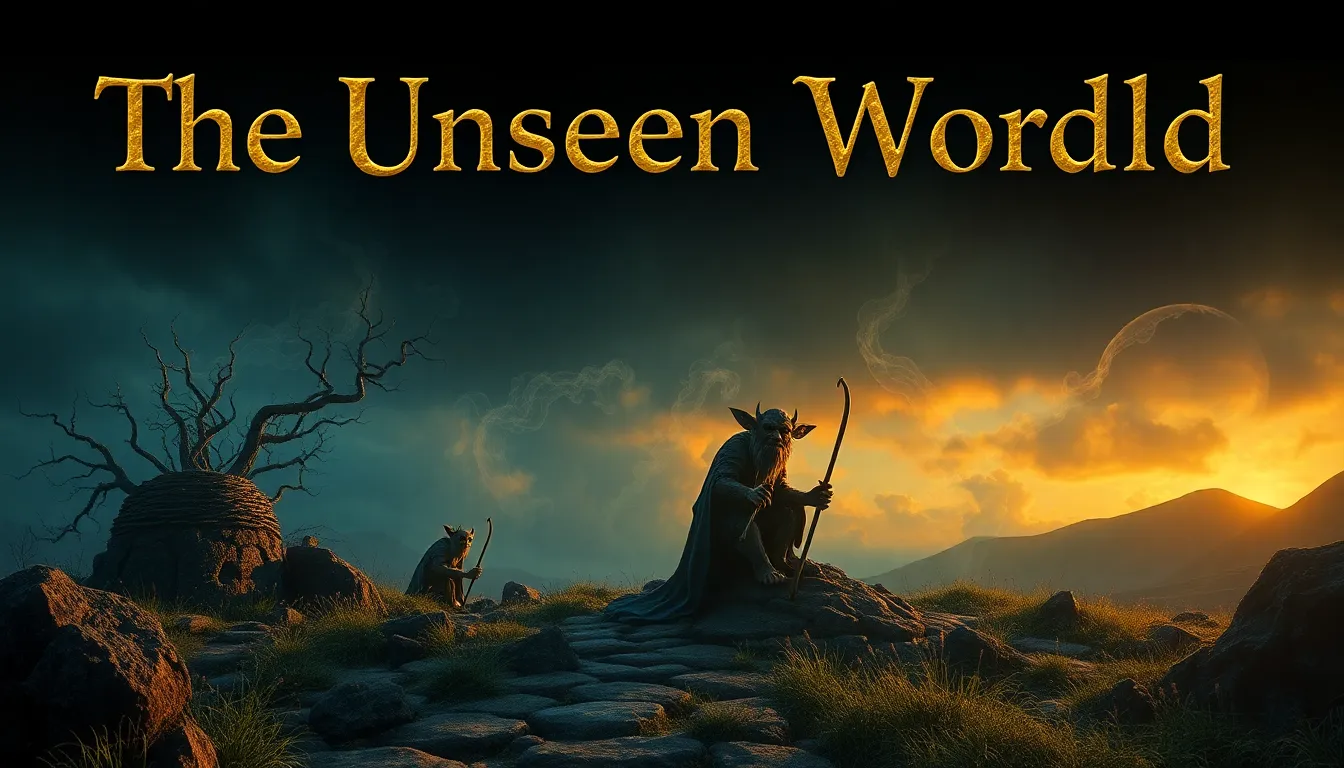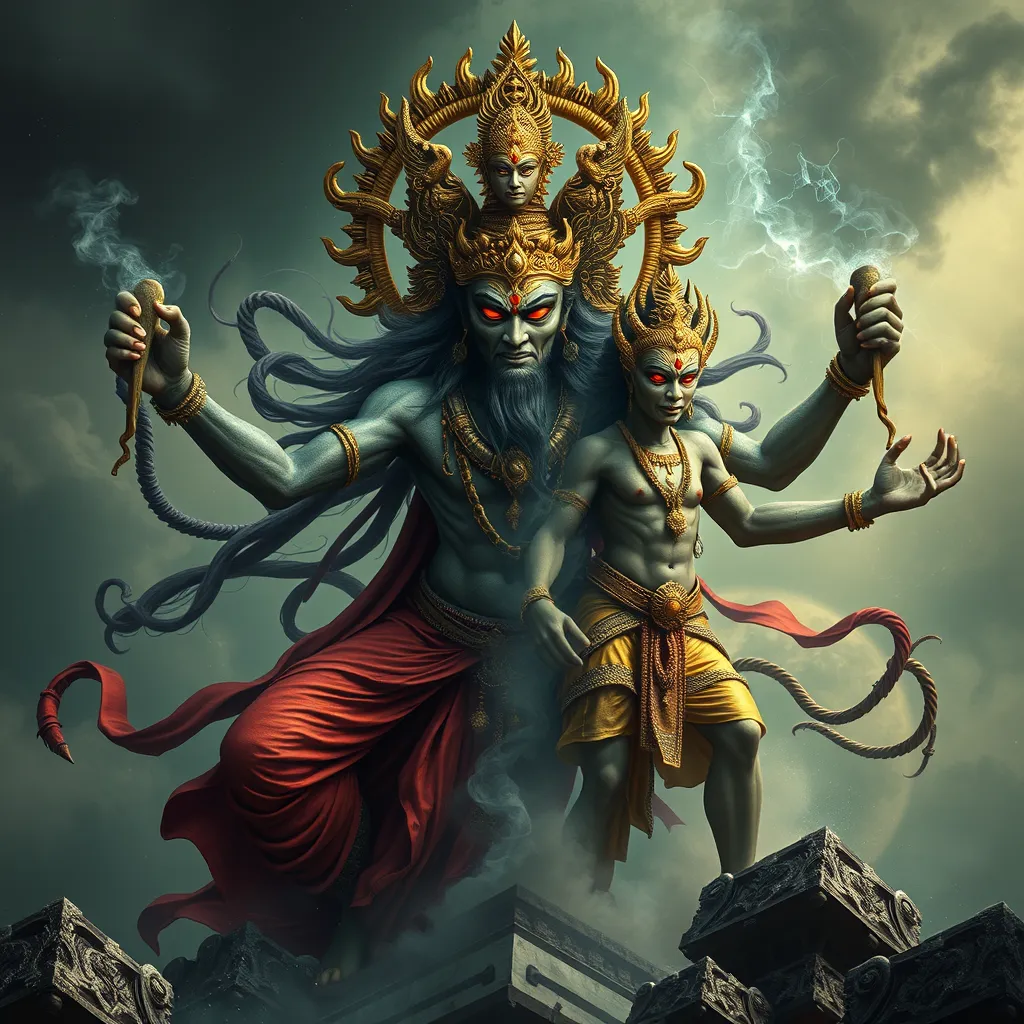The Unseen World: Exploring the Lore of the Celtic Goblins
I. Introduction to Celtic Folklore
Celtic folklore is a rich tapestry of myths, legends, and traditions that have been passed down through generations. It serves as a window into the beliefs, values, and cultural identity of the Celtic people across regions such as Ireland, Scotland, Wales, and Brittany. Folklore is significant in Celtic culture as it encapsulates the moral lessons, historical narratives, and spiritual insights of the community.
Among the myriad of creatures that populate Celtic mythology, goblins stand out as particularly intriguing. Often portrayed as mischievous and cunning, these beings play a complex role in the folklore, embodying both the whimsical and the ominous aspects of nature.
II. The Origins of Celtic Goblins
The origins of Celtic goblins can be traced back to ancient beliefs that permeated Celtic society. These creatures are thought to have emerged from the interplay between nature and the supernatural, representing the untamed elements of the world around them.
Historically, goblins share connections with other mythological creatures in Celtic lore, such as fairies and elves. They often inhabit the same mythical realms and are engaged in similar antics, but they are distinguished by their more malevolent and trickster-like attributes.
III. Characteristics and Traits of Celtic Goblins
Celtic goblins exhibit a variety of physical descriptions and traits, which can differ between regions. While some are depicted as small, green-skinned beings, others may appear more humanoid, with exaggerated features and a more sinister demeanor.
- Physical Descriptions: Goblins are often described as having pointed ears, sharp teeth, and an unsettling grin. Their sizes can range from tiny to moderately large, depending on the tale.
- Variations Among Regions: In some areas, they are seen as more benevolent, while in others, they are feared as harbingers of mischief or disaster.
Behaviorally, Celtic goblins are characterized by their mischievousness, cunning, and penchant for trickery. They are known to play pranks on humans, often leading them astray or causing minor havoc. This behavior reflects the unpredictable nature of the world, a theme prevalent in many Celtic narratives.
IV. Goblins in Celtic Mythology and Literature
Famous tales and characters featuring goblins are found throughout Celtic mythology. One notable example is the tale of the Goblins of the Glen, where a group of goblins disrupts a village’s festivities, leading to a series of comical and chaotic events.
Key texts and oral traditions often highlight the dual nature of goblins, showcasing their role as both protectors of nature and instigators of chaos. The Book of Invasions and other medieval manuscripts provide insight into the complex relationships between humans and these creatures.
V. The Role of Goblins in Celtic Society
Goblins serve as symbols of luck and misfortune in Celtic society. Their unpredictable nature means they can bring both good fortune and calamity, depending on their whims. This duality has led to various superstitions and customs surrounding them.
- Symbols of Luck: In some traditions, encountering a goblin may be seen as a sign of upcoming fortune.
- Symbols of Misfortune: Conversely, their mischief may foreshadow trouble or disaster, leading to caution in interactions with the supernatural.
Influence on local customs and celebrations is evident, particularly during festivals like Samhain, where the boundary between the living and the spirit world is blurred. Goblins are often invoked in stories shared during these times, serving as cautionary figures that remind people of nature’s unpredictability.
VI. Comparative Mythology: Goblins vs. Other Creatures
When comparing goblins to other mythological beings, such as fairies and trolls, several similarities and differences arise. Like fairies, goblins are often associated with nature and possess magical abilities, yet their demeanor is typically more sinister.
- Similarities: Both goblins and fairies can interact with humans, often with unpredictable outcomes.
- Differences: Goblins are more likely to engage in trickery and are often depicted as having malevolent intentions, while fairies may be portrayed as more benevolent or neutral.
The significance of goblins in the broader context of European folklore is notable, as they embody themes of chaos, nature’s unpredictability, and the thin veil between the human world and the supernatural.
VII. Modern Interpretations of Celtic Goblins
In contemporary literature, film, and art, Celtic goblins are experiencing a resurgence of interest. They are often reimagined in various narratives, sometimes appearing as comical characters in children’s stories or as dark, complex figures in fantasy novels.
This renewed focus on Celtic mythology highlights the timeless allure of these creatures and their relevance in modern storytelling. Films like Pan’s Labyrinth and series such as Game of Thrones draw inspiration from Celtic lore, blending ancient themes with contemporary narratives.
VIII. Conclusion: The Lasting Legacy of Celtic Goblins
In summary, the lore of Celtic goblins presents a fascinating glimpse into the cultural psyche of the Celtic people. Their characteristics, origins, and roles in mythology reflect deeper themes of nature, morality, and the human condition.
Today, goblin lore continues to resonate, serving as a reminder of the rich tapestry of beliefs that shape our understanding of the world. Their enduring presence in literature and popular culture underscores their cultural significance and the timeless appeal of mythology in our lives.



